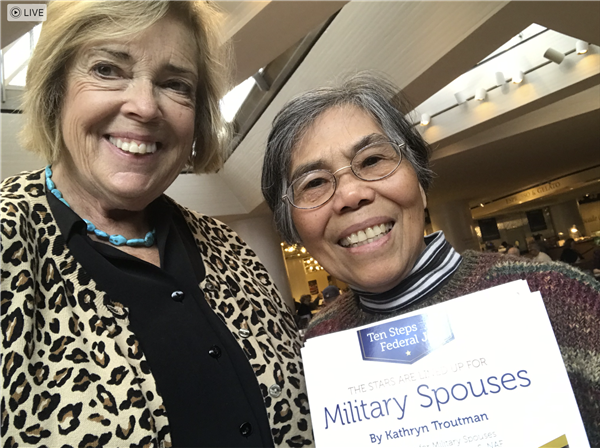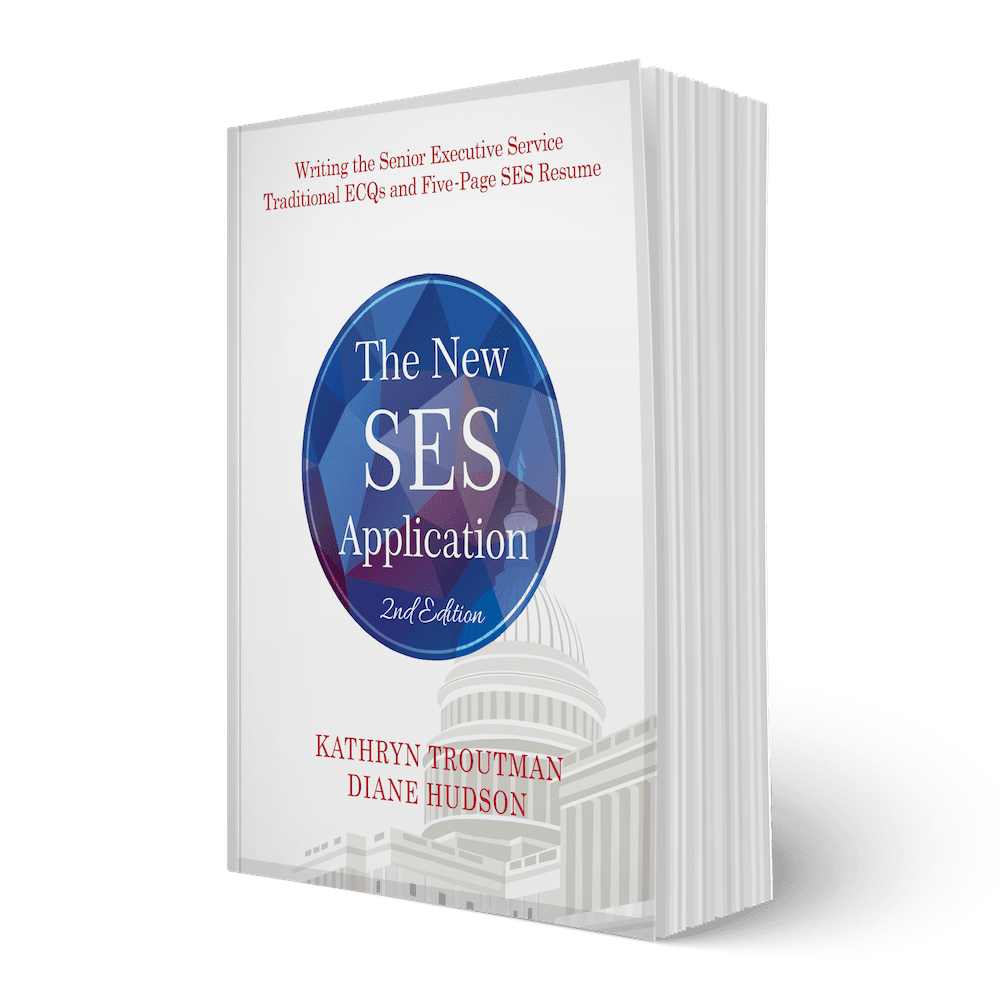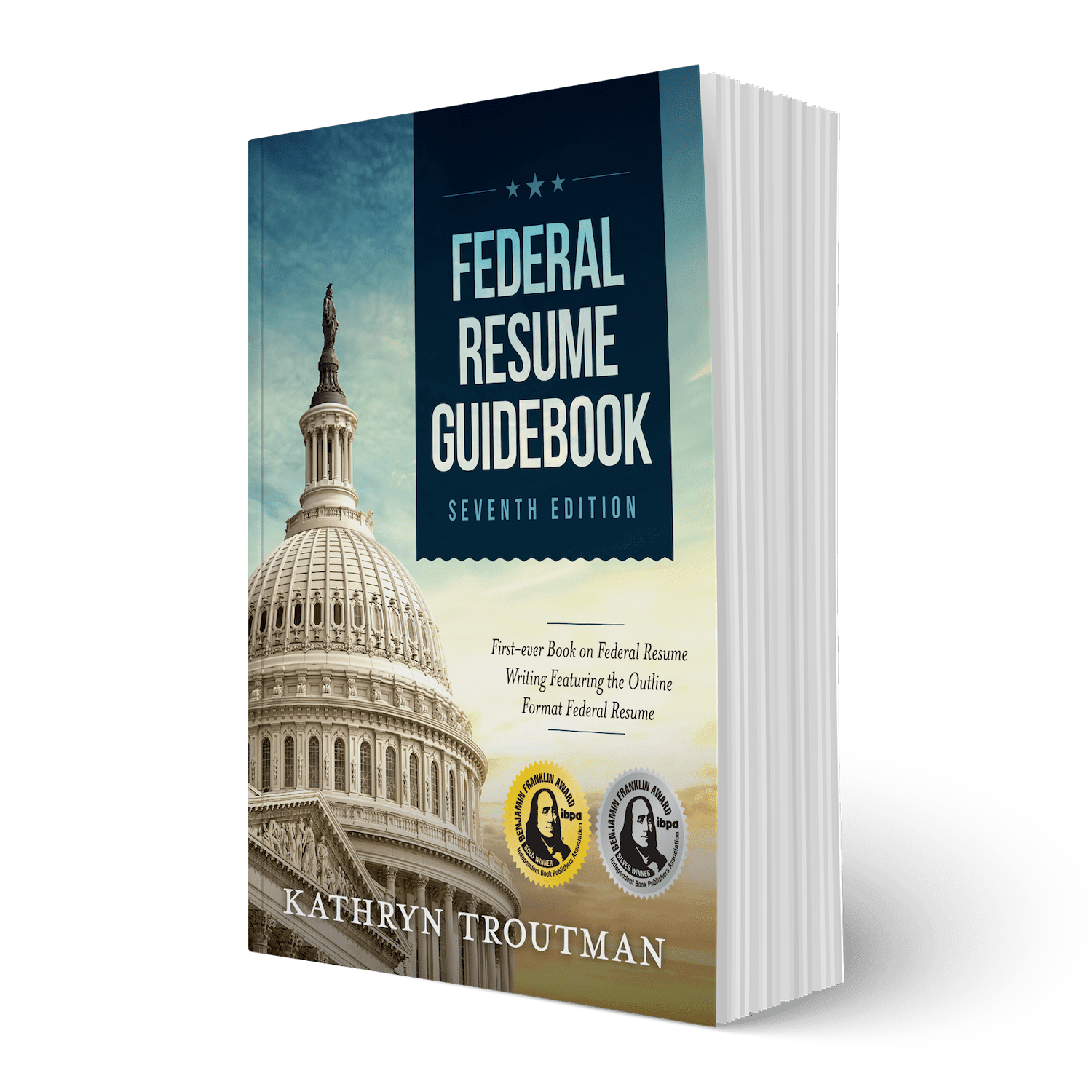
Originally written by Ligaya Fernandez* in 2012
and updated by Kathryn Troutman October 24, 2023
Photo from National Gallery of Art, November 17, 2018
Ligaya was Kathryn’s first important HR Mentor and Advisor for her books, curriculum, coaching specializing in Federal Resume Writing, Training in Government Agencies, and the Ten Steps Certification train-the-trainer program since 2002. Ligaya created the “HR Day” Curriculum for the certification program. Ligaya’s expertise in KSA and Accomplishment Writing is excellent. Here are her thoughts! This is republished because of the challenges and importance of accomplishment writing for Federal positions TODAY!
In 2012, OPM and Hiring Reform pretty much ended the KSA narrative writing for most USAJOBS announcements (except FAA and Library of Congress).
But HR Specialists and Managers are still asking for specific examples of accomplishments that demonstrate the knowledge, skills, and abilities… and the Specialized Experience … in your resume.
What Knowledge, Skills, and Abilities Do You Have? How Can you Feature them in Specific Accomplishments?
The case study here is for a biologist with the World Health Organization. He has many KSAs, such as knowledge of a variety of research methods, analytical and statistical skills, AND writing and editing abilities.
Accomplishment Records/KSAs Are Really Just Great Examples of Your Work
What the HR specialist REALLY wants is a good example that shows your ACCOMPLISHMENT RECORD as it demonstrates this knowledge, skill, or ability. You can’t just say, “I have five years’ experience in project management,” or “My job requires excellent interpersonal skills.”
What are KSAs or Accomplishment Statements?
They are specific information/examples about your:
- Experience
- Education
- Training
- Awards
- Achievements
…That demonstrate that you have the KNOWLEDGE, SKILLS, ABILITIES (KSAs), and other characteristics needed to do the job.
Why are Qualifications Statements/KSAs/Accomplishments required?
Merit competition – The government is VERY fair in reviewing applications. They ask for more information on paper than typical employers to make sure they select the best qualified candidates.
To identify “best-qualified” candidates – The accomplishments are great written statements that can demonstrate your qualifications. Success in most government jobs requires significant writing, analysis, and interpersonal skills.
How to Write Competitive Accomplishment examples:
1. Study vacancy announcements to find your ideal job.
- Determine keywords.
- Find skills, education, experience, and credentials important in the field.
- Use keywords when describing your KSAs.
2. Use the CCAR Method to write your accomplishments.
Resume Place has a great, free, easy-to-use CCAR Writing Builder.
Try it out for your next CCAR story!
Context: Describe the problem or goal and when you took it on.
Challenge: Describe the circumstances in which you had to meet your goal or solve the problem, including information such as:
- Individuals or groups involved (e.g., agency head, Congressional member, state rep, supervisor, media, demanding customer, etc.)
- Constraints with which you had to contend (e.g., limited resources such as money, time, or personnel; bad weather; negative publicity; short deadline; low morale; lack of knowledge/skill/expertise, etc.)
Action: Describe the actions you took to solve the problem or attain your goal.
Results: Describe the measurable outcomes of your actions or accomplishments attained. Be sure to cite information such as:
- Money saved
- Time reduced
- Efficiency/productivity gained
- Knowledge transfer
- Deadlines met (internal and/or external)
- Awards, commendations, or other recognition
3. Other Tips
- Understand what the job entails.
- Don’t be shy; sell yourself.
- Be realistic; don’t exaggerate.
- Use keywords when describing KSA.
- Don’t use keywords thoughtlessly.
- Give relevant examples.
- Be concise and to the point; address the KSA.
- Have a friend review your resume and qualifications statements.
- If you don’t have anyone else who can look at your materials, review, review, review!
*AUTHOR’S BIO: Ligaya J. Fernandez retired from the Federal Government after 21 years of service. All of her Federal career was in the field of HR management. Her last assignment was as a senior research analyst with the U.S. Merit Systems Protection Board where she authored several reports that were widely received, including reports dealing with the Federal Career Intern Program, the hiring of upper-level employees, the quality of Federal vacancy announcements, and the job search experiences of new hires. Ligaya also worked at the former Customs Service, the FAA, and Army as a personnel staffing and classification specialist. She was a college instructor before she worked for the Federal Government. She has a master’s degree in management.
SAMPLE KSA IN THE CCAR FORMAT
From Kathryn: I know this KSA / CCAR is from 2006 — but the CCAR accomplishment writing style is the same TODAY and the story is so impressive and important! Be sure to see the shorter resume version after the CCAR. That accomplishment would be added into your resume under the heading KEY ACCOMPLISHMENTS. HOT TIP: Be sure to separate your DUTIES from your ACCOMPLISHMENTS, so the HR staff can FIND the accomplishments!
Agency Name: U.S. Environmental Protection Agency
Department Name: National Health and Environmental Affects Research Laboratory
Position Title, Series, Grade: Lead Research Biologist, 0401, 14
Announcement Number: 10101
Title: Knowledge, Skills & Abilities
Describe your experience with a variety of: advanced statistical approaches, programming languages of statistical analysis and graphics, information management software tools to access, collect, compile, synthesize, maintain, analyze, model, and/or report on large, complex ecological and environmental research data sets, including promising approaches for technology transfer of computational methods. Please provide specific examples of analytical tools and approaches you have utilized.
In November 2006 to September 2007, I was detailed to the World Health Organization (WHO) as an associate biologist. I was tasked to develop a statistical approach for mapping the risk of contracting malaria in two villages in the Democratic Republic of the Congo. Malaria has been reported to have regularly occurred in these two villages for many years with, in many cases, fatal results. The WHO wanted to be able to predict with more accuracy the occurrence of malaria, not only in the two villages, but in the whole country. Mapping was critical in successfully controlling incidence of malaria.
To map the risk, I used SAS, a powerful statistical software package, to develop a statistical model to predict the risk of occurrence.
I traveled to the Democratic Republic of the Congo to actually observe the occurrence of malaria in the two villages and to collect data. When I arrived, I found that estimation was complicated by the local variation of risk that cannot be accounted for by the known variables. Also, my work became more challenging because data points of measured malaria prevalence were not evenly or randomly spread across the area to be mapped.
To overcome this challenge, I used a simple two-stage approach for producing maps of predicted risk:
1. I used logistic regression modeling to determine approximate risk on a larger scale, and
2. I employed a geo-statistical approach to improve prediction at the local level.
This two-stage approach resulted in a map showing the improvement of risk prediction brought about by the second stage.
Before the end of my detail, I presented my two-stage approach to mapping the risk of malaria to the WHO. The WHO has adopted the approach I developed not only in the two villages in the Democratic Republic of the Congo, but in other African countries as well.
To recognize my novel approach, the WHO awarded me its Humanitarian Award in 2007. In addition, I have published a peer-reviewed article titled, “A spatial statistical approach to Malaria mapping,” in the spring 2008 issue of the Journal Science describing my methodology.
SHORT FEDERAL RESUME ACCOMPLISHMENT FORMAT:
Detailed as an associate biologist to the World Health Organization (WHO) from 11/2006-12/2007, I developed a predictive mapping approach to malaria in two villages in the Democratic Republic of the Congo (DRC). I traveled to DRC to observe cases and collect data, but estimation was complicated by local variation of risk and highly uneven distribution of prevalence data points. Using the statistical analytics software SAS, I applied logistic regression modeling to determine approximate risk on a larger scale, then employed geo-statistical methods to improve local prediction. When I presented this innovative two-stage strategy, WHO adopted it not just for the two DRC villages but for other African countries, and WHO awarded me its Humanitarian Award in 2007. I also published the peer-reviewed article, “A spatial statistical approach to Malaria mapping,” in the spring 2008 issue of Science.
Kathryn Troutman is the Founder and President of Resume Place, Inc., a Federal Career Consulting, Writing, Training and Publishing business located in Baltimore, MD. Her firm specializes in writing and designing professional Federal resumes, as well as consulting, coaching and education on the Federal hiring process. She is the author of many Federal career books, including the new 9th Edition of the Jobseeker’s Guide: US Government Jobs for Military and Spouses and the popular Federal Resume Guidebook, 7th Edition (the No. One best-selling resume book on Amazon).
You can see samples of SES ECQs, Accomplishments
and Federal Resumes in Kathryn’s books:

Writing The New SES Application

Federal Resume Guidebook, 7th Ed.
SES ECQ Consulting about your ECQs and Accomplishments
$780 for three hours – if you have a draft of accomplishments to be assessed
Purchase $780 three hour consultation here







